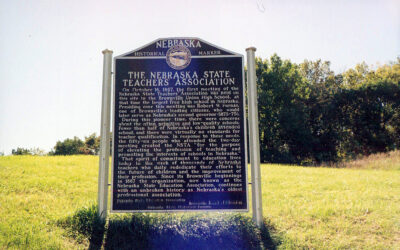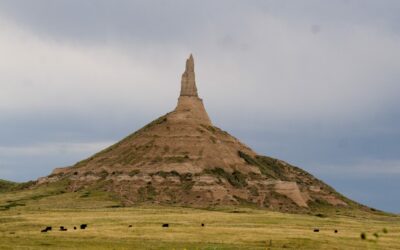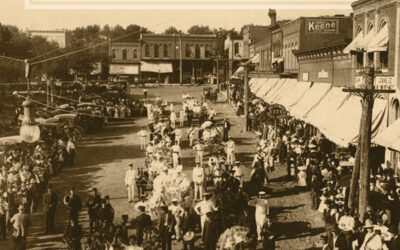
Evelyn Sharp, a Nebraskan pilot, is pictured here with her Curtiss Robin OX-5.
“At first glance, Friday the thirteenth, seemed much like any other day,” said the Kearney Daily Hub on Friday, January 13, 1922, “and had it not been for the furtive expressions of ancient superstition here and there, little would have been thought of this as a fateful day.” A reporter who interviewed a number of Kearney residents on their beliefs regarding the day, found that “the superstition still carries power, even though only imaginative.” Few people would admit openly that they believed Friday the thirteenth to be unlucky, but a review of the columns of early Nebraska newspapers reveals that some were reluctant to schedule a journey or other important event or activity on that day.
The Omaha Daily Bee reported on Saturday, August 14, 1915, that on the previous day, not one marriage license had been issued at the Douglas County Courthouse: “One prospective bride . . . . declared she could not think of getting married on Friday, the 13th.” Those born on Friday the thirteenth did not usually view themselves as unlucky.
Roy Worley of Kearney told the Hub on September 13, 1929, “I have never had any bad luck on Friday the thirteenth [his birthday] and I have no reason to think that it is different from any other day,” adding that “the superstition that has grown up about the day is what Henry Ford said history is.” Some professed to believe that Friday the thirteenth could actually be a lucky day. A Rulo area farmer in 1907 advertised a public sale for Friday, December 13, maintaining that the thirteenth would be “his lucky day and he expects a big crowd, and everything will go at the top price. We [the Falls City Tribune, November 29, 1907] await results, and if all turns out as he says we will forever bury this old superstition. Either 13 or Friday have been considered unlucky, but as a combination it is more than our pessimistic nature can swallow. Attend this sale and watch the outcome.”
The number thirteen has long been considered unlucky, even when not paired with a Friday. Hotels sometimes skipped the number when designating rooms, and hostesses routinely avoided seating thirteen guests at dinner parties. The thirteen members of the graduating class of North Platte High School in 1895 brought the class mascot to the ceremony with them “to break the possible ill-luck that might arise. In this, the class showed itself to be more superstitious than Gov. Holcomb who has just accepted an honorary membership in a Thirteen club organization in New York City.” [North Platte Semi-weekly Tribune, June 4, 1895]
Aviatrix Nellie Willhite took advantage of the many instances of the number thirteen in her life, to advertise herself as the “Thirteen Girl” during her participation in the All Nebraska Air Tour in 1930 during which her monoplane carried a large “13” as an emblem. She told the Hub on June 28, 1930, that she considered thirteen to be her lucky number. Her first solo flight had been made on Friday the thirteenth. She enrolled in an aviation school in Sioux Falls, South Dakota, as the thirteenth student, and she was the thirteenth student to graduate after thirteen hours of instruction.




